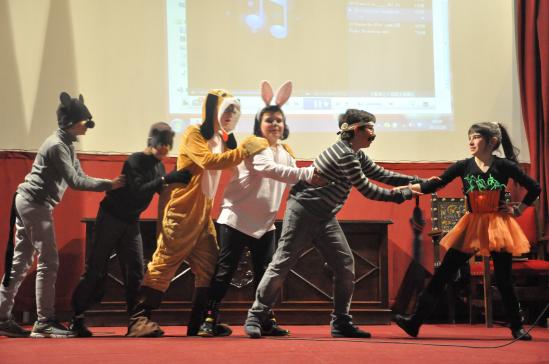La Oficina de Gestión de la Comunicación y la Unidad de Cultura Científica de la UGR, en colaboración con el CEVUG, ponen en marcha un taller de divulgación científica en medios de comunicación para el PDI
Las clases se celebran en la Facultad de Comunicación y Documentación, y la próxima edición tendrá lugar el 1 de marzo
Veinte investigadores de la Universidad de Granada (UGR), pertenecientes a distintos centros y facultades, han participado en el Taller de Divulgación Científica en medios de comunicación para el Personal Docente e Investigador (PDI), organizado por la Oficina de Gestión de la Comunicación y la Unidad de Cultura Científica de la UGR, en colaboración con el Centro de Enseñanzas Virtuales (CEVUG).
El objetivo de esta actividad, titulada “Cómo enfrentarse a una entrevista en prensa, radio y TV”, es enseñar a los científicos a divulgar su trabajo a través de los medios de comunicación tradicionales, y dotarlos de algunas herramientas básicas para comunicar mejor los resultados de su investigación al relacionarse con periodistas.
En el taller participaron investigadores de facultades de la UGR como Ciencias Económicas y Empresariales, Ciencias, Psicología, Ciencias de la Educación, Ciencias de la Salud, Medicina o la ETS de Ingenierías Informática y de Telecomunicación, entre otras, que tuvieron la oportunidad de enfrentarse a una entrevista para prensa escrita, y realizar esta misma práctica en un estudio de radio y un plató de televisión.
Plazas agotadas
Esta nueva oferta formativa de la UGR para el curso 2015/2016 ha tenido una excelente respuesta por parte del PDI de la UGR, ya que en cada una de las tres ediciones celebradas hasta la fecha las plazas se agotaron en apenas unas horas. La próxima edición del Taller tendrá lugar el 1 de marzo, de 15,30 a 21,15 horas.
Los directores de la Oficina de Gestión de la Comunicación y de la Unidad de Cultura Científica de la UGR, José Ángel Ibáñez y Ana Isabel García, presentaron a los asistentes la oferta de servicios de ambos departamentos de la institución, y cómo estos pueden ayudarles a divulgar sus investigaciones.
Por su parte, los periodistas Carlos Centeno (Oficina de Gestión de la Comunicación / Unidad de Cultura Científica de la UGR) y Susana Escudero (Canal Sur Radio, directora del programa de divulgación científica “El Radioscopio”) fueron los encargados de impartir los módulos “Del laboratorio a los medios de comunicación: cómo convertimos la Ciencia en noticia” y “Divulgando en radio y TV: no es para tenerle tanto miedo”, respectivamente.
Prácticas en un plató de TV
El decano de la Facultad de Comunicación y Documentación de la UGR, Jorge Bolaños, expresó su satisfacción por que su centro acoja este tipo de actividades formativas “tan necesarias para dotar a nuestros científicos de las herramientas comunicativas que les hacen falta a la hora de enfrentarse a una entrevista”.
Durante el taller, los investigadores de la UGR conocieron cómo es el día a día de los periodistas que trabajan en los medios de comunicación, y analizaron conceptos como la agenda informativa, los titulares y la entradilla en una nota de prensa o la especialización en el ámbito del Periodismo.
También conocieron desde dentro cómo funcionan un plató de televisión y un estudio de radio, con el objetivo de familiarizarse con ellos para cuando tengan que enfrentarse a una entrevista real sobre su trabajo científico.
Contacto:
Carlos Centeno Cuadros
Oficina de Gestión de la Comunicación / Unidad de Cultura Científica de la Universidad de Granada
Teléfono: 958 244 278
Correo electrónico: centeno@ugr.es
Página web de las noticias de investigación publicadas por UGRdivulga:
http://canal.ugr.es/index.php/noticias-ciencia-ugr
Versión en inglés: http://canal.ugr.es/index.php/science-news-ugr
Versión en francés: http://canal.ugr.es/index.php/nouvelles-de-la-science-ugr




